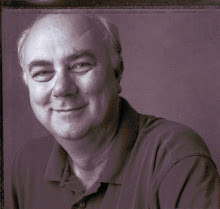Addressing the Address
I was thumbing through an old D-B football program, this one from Sept. 6, 1957 for the Lynn Camp game, and two things jumped out at me:
First,
how small the players were.
End Freddie
Begley weighed 135 pounds. Guard Wayne Droke was 151 pounds. And halfback Bill
Bowen was 123 pounds. Take away David Steadman, 222 pounds, and the rest of the
team could have passed for a modern freshman team.
And second, how casually the program included each player’s home address.
That
was par for the course in those days.
If you
made Eagle Scout in 1957, the story would list your home address.
If
you won the Eighth Science Fair at Robinson (only an example; I didn’t), the
story would list your home address.
And if
you held up a liquor store and got in a slugfest with the arresting officers,
the story would list your home address. (Again, only an example; I didn’t).
Nobody
worried about their privacy. Their address was already in the phone book.
That
was starting to change when I first got into the newspaper business in the
early seventies. Soon the home addresses of miscreants (and their victims)
became a little more imprecise: Stick Up Artist, who lives in the 1300 block of
Maple Street. Burglary Victim, who lives in the 300 block of Main Street.
The
rationale was that the newspaper didn’t want to aid curiosity seekers who would
drive by the scene of the crime and point and gawk.
In
the current atmosphere of Intense Privacy, that Eagle Scout may only be
identified by his Troop and City.
All
of which is a little odd since you can Google almost anyone and find out the
home address.
Take
one TV business reporter, famous for protecting her privacy, including marital
status (I won’t name her). I not only found her home address, I found out who
she bought the house with (her partner/husband/I don’t know) and how much the
two of them paid for it in 2017.
But it
is still jarring to read the roster of that 1957 D-B team and see that Darwin
Compton lived at 1429 Miller Street: “Son of Mr. and Mrs. A.E. Compton of ….”
(I
used Darwin as an example because I went to church with him and I know that the
A. stood for Albert.)
I
would think that could have been unwise, even in ’57. What if Darwin had taken
a punch at a Lynn Camp player during the game and the Lynn Camp player’s family
decided they needed to talk about it after the game.
Of
course they didn’t have GPS in 1957 so finding Miller Street would have been a
challenge, even if you asked a local:
Lynn
Camp Parent: “How do we get to Miller Street?”
Local:
“Okay, do you know where the Upper Circle is? No, okay, how about the Garden
Basket? Poston’s? I’m afraid I can’t help you.”
So maybe
it wasn’t such a bad idea.
(1957 football program on permanent loan from the Bob Beck and Jim Beck Collection)








0 Comments:
Post a Comment
<< Home